スマートフォンやタブレットが当たり前になった現代、私たちは文字通り「情報の洪水」にさらされています。ソーシャルメディアやニュースアプリを開けば、膨大な量の情報が一瞬で流れ込み、その中には正確なものもあれば、疑わしいものやデマも混在しています。大人ですら情報を取捨選択するのは難しく、気づかないうちに「これって本当なの?」と思わず口にしたくなるような情報を信じてしまうこともあるでしょう。ましてや、情報リテラシーをまだ十分に身につけていない子供にとっては、こうした情報過多の時代を生き抜くのはさらにハードルが高いことです。
そこで本記事では、「正確な情報」を子供に伝えるために、親としてどう向き合えばよいのかを5つのテーマに分けて解説します。デジタル技術が進歩した結果、子供たちはメリットとデメリットの両方に晒されています。しかし、親が意識と工夫を少し変えるだけで、子供の情報との向き合い方は大きく変わるはずです。これから紹介するヒントを参考に、混沌とした情報社会を楽しく、そして正しくナビゲートしてあげましょう。
1. 情報洪水に負けないための心構え
まずは親自身が情報過多の時代に対して、どのような心構えを持つべきか考えてみましょう。私たちは日々、SNSやニュースサイトなどで大量の情報を浴びています。そこには刺激的な見出しや、感情を大きく揺さぶるような内容もあり、それに反応してしまうのはごく自然なことです。しかし、子供に正確な情報を伝えたいと願うなら、いったん呼吸を整えて「本当に正しいのか」「その情報を鵜呑みにして大丈夫か」と自分に問いかける習慣を身につける必要があります。
さらに、親が「情報疲れ」を起こしてイライラしていると、その姿は子供にとって大きな影響を与えます。今の子供たちは、私たちが想像する以上に周囲の大人の感情に敏感です。親が落ち着かず、常に情報に振り回されているような態度をとると、子供は「情報って面倒くさいものなんだ」「SNSを見るといつもパパやママは怒っている」といったネガティブな印象を持ってしまうかもしれません。まずは大人自身が「必要以上に情報に振り回されない」姿勢を示すことが、子供の学びにとって何より大切な一歩なのです。
子供は常に親の背中を見ています。新しい情報やショッキングなニュースに接するとき、親が感情的にならず、「こういうときは情報を確認してみようね」と落ち着いて提案する姿を見せるだけで、「情報はちゃんと確かめるものなんだ」という学びが自然と身につきます。子供が自分の意見を言い出すようになったら、「どうしてそう思うの?」と静かに問いかけ、根拠を一緒に探す姿勢を見せましょう。これが、情報洪水の時代を生き抜くための基本姿勢となります。
2. 情報ソースの見極め方
情報リテラシーを高める上で欠かせないのが、「情報ソースを見極める力」です。情報の信頼度は、誰が、どのような目的で発信しているかによって大きく異なります。例えば、公共機関や大学の研究者、専門家が提供する情報は比較的信頼度が高いと考えられますが、個人のSNSアカウントやネット上の匿名記事などは玉石混交で、真偽を確かめる必要があります。
子供がインターネットで調べ物をするときには、まず「どのサイトを使っているのか」「そのサイトはどんな組織や人が運営しているのか」を確認するクセをつけさせましょう。キーワード検索だけではなく、サイトのトップページや「会社概要」「運営者情報」を読むことで、その情報を公開している人たちの立場や目的をある程度知ることができます。大人でも面倒に感じる作業ですが、これを習慣化することで「このサイトは信頼できそう」「こっちのサイトはちょっと怪しい」と自然に判断できるようになります。
また、SNSの情報を鵜呑みにしないことも大切です。SNS上では「バズりたい」「目立ちたい」といった思惑から誇張された情報が流れることもあります。一方で、正確で有益な情報を発信している専門家がいるのも事実です。子供と一緒に「どの人は専門家らしいね」「この人はどんな資格や経験があるんだろう?」などと会話しながら、発信者のプロフィールや経歴をチェックする癖をつけると良いでしょう。大切なのは、単に流れてきた情報を受け取るだけではなく、「この情報は誰がどういう立場で出しているのか」を常に考えることなのです。
3. 子供と一緒に考える時間をつくる
情報過多の時代だからこそ大切にしたいのが、親子で情報について「一緒に考える時間」を持つことです。忙しい日々の中でゆっくり話し合う機会を確保するのは難しいかもしれませんが、毎日のちょっとした時間――食事中や車での移動中などを使って、子供と一緒に最近のニュースや話題について話してみましょう。
例えば、学校で友達に聞いた話や、SNSで流れてきた面白い動画の内容を子供が口にしたとき、「へえ、そうなんだ」で終わらせずに、「それってどうしてだと思う?」「確かめる方法はあるかな?」と問いかけをしてみるのです。ポイントはあくまで子供の興味を引き出すこと。子供が「知らない」「わからない」と言ったとしても、責めずに「一緒に調べてみようか」と提案してみる。そうすることで、家庭の中で自然とリサーチ能力や批判的思考が育まれていきます。
また、子供が言葉に詰まったら、親の側からも「ママも一緒に考えたいんだけど、こんな方法があるかもしれないね」とアイデアを出すのも良いでしょう。子供は大人がどうやって情報を探し、比較検討し、最終的に自分の意見を組み立てているのかを間近で見ることで学びます。大切なのは、結果そのものよりも「考えるプロセス」に子供を巻き込むこと。これが情報過多の時代に流されず、自分で判断できる力を育む鍵となります。
4. テクノロジーとの上手な付き合い
情報過多の時代を語るうえで欠かせないのが、スマートフォンやタブレット、パソコンといったデバイスとの付き合い方です。子供は驚くほどの速さで最新のテクノロジーに順応していきますが、その分、ネット上の誤情報や不適切なコンテンツに触れるリスクも高まります。ここで大切なのは、一方的に「使っちゃダメ」と制限するのではなく、「どう使えばいいのか」を親子で考えることです。
まず、子供がデバイスを利用する時間帯や目的について、家庭内でルールを作るのも一つの方法です。例えば「寝る1時間前はスマホを触らない」「ゲームは週末に1時間だけ」など、具体的なルールを設定し、それを親も一緒に守ります。親がルールを破ってしまうと「大人はズルい」となりかねないので、家族全員で実践する姿勢が大切です。
また、フィルタリングやペアレンタルコントロールの活用も検討しましょう。これらのツールは不適切なサイトへのアクセスや課金トラブルを防ぐのに効果的ですが、あくまで「補助的な手段」でしかありません。子供がいずれ大人になったとき、親の目の届かない世界に踏み出すのは避けられない現実です。だからこそ、フィルタリングだけに依存するのではなく、子供に「なぜその情報は有害なのか」「どんなサイトなら安全なのか」を具体的に教え、理解させるプロセスも忘れないようにしましょう。
そして、デバイスには「使う意味や目的」があることを意識づけると良いでしょう。調べ学習やクリエイティブな活動にテクノロジーが大きく役立つのは事実です。親子で一緒にアプリを使って楽しく学んだり、動画を編集して作品を作ったりすることで、テクノロジーは「有益な道具」であると感じられるようになります。これは子供が情報過多の海を泳ぎながら、自分なりの航海術を身につける大切なステップとなるはずです。
5. 未来を育む批判的思考の育て方
最後に、「批判的思考」を育てることの大切さについて考えてみましょう。批判的思考とは、何かの情報を目にしたときに鵜呑みにせず、「本当にそうだろうか?」と問いかけ、自分なりの根拠や論理で確かめる思考のプロセスを指します。情報過多の時代にあっては、これこそが子供の未来を守る最強のスキルとなります。
批判的思考は一朝一夕で身につくものではありません。日常の小さな疑問から少しずつ育てていく必要があります。例えば、テレビのCMを見て子供が「これ、めちゃくちゃ良さそう!」と言ったとき、「そうだね、でもどうして良さそうに感じるんだろう?」と投げかけてみましょう。CMには宣伝の意図があること、見せ方や言葉の使い方にはテクニックがあることを子供と一緒に考えると、その裏にある仕組みに気づけるようになります。
さらに、学校で学んだ知識と実際の社会とのギャップについて話し合うのも良い訓練です。教科書に書いてあることがすべて正しいとは限りませんし、世の中は常に変化しています。親が「この知識は昔は正しいとされていたけど、今は研究が進んで見方が変わってきたんだよ」と歴史や科学の発展を例に出すことで、子供は「知識はアップデートされるものだ」という意識を持てるようになります。これが、批判的思考を育む大きなヒントになります。
批判的思考を養う過程で大切なのは「意見の対立を恐れない」ことです。親が子供と意見を交わすとき、同意をするだけがゴールではありません。「その考えは面白いね。けど、別の見方もあるかもしれないよ」と議論する余白を与えることで、子供は「違う視点で考えてみる」トレーニングを続けられます。親子で正解のない問に向き合い、楽しみながら「自分なりの答え」を模索する――これが情報過多の時代を生き抜く力の源になります。
まとめ
情報過多の時代、子供に正確な情報を伝えるために親ができることは多岐にわたります。まずは大人自身が冷静に情報を受け止める習慣を身につけること、そして子供と一緒に情報ソースを点検しながら考える時間を意識的につくることが重要です。テクノロジーとの付き合い方を家族で話し合い、ルールを守りつつ上手に活用する姿勢を見せるのも良い方法です。そして何より大切なのは、批判的思考を育むこと。疑問を持ち、問い続け、考え続ける力は、子供たちが膨大な情報の中から真実を見極め、自分らしい人生を歩むための力強い武器になります。
大切なことは、「情報は与えられるもの」ではなく「取りに行くもの」であり、「使いこなすもの」でもあるという姿勢を、親自身が体現することです。子供の未来を見据え、親子で共に学び、一緒に情報の海を航海する。そんな姿勢こそが、この情報過多の時代をポジティブに生き抜くための最大のポイントと言えるでしょう。
Protect Your Child’s Future! Five Tips for Parents to Help Their Children Navigate an Era of Information Overload
Smartphones and tablets have become commonplace, and we truly live in a “flood of information.” One glance at social media or a news app brings an enormous amount of information, which can include both accurate facts and misleading or false data. Even adults find it difficult to sift through this abundance of information, sometimes finding themselves believing something only to later wonder, “Is this really true?” For children, who have yet to fully develop media literacy, staying afloat in this sea of information can be an even bigger challenge.
In this article, we will discuss how parents can help their children receive “accurate information” by dividing the topic into five themes. Although advances in digital technology have exposed children to both its merits and demerits, a little awareness and ingenuity from parents can significantly change how children interact with information. By taking on board the following tips, you can guide your child in navigating our chaotic information society in a fun and accurate way.
1. A Mindset for Surviving the Flood of Information
First, let’s consider the mindset parents should adopt in an era of information overload. We encounter massive amounts of information daily via social media and news sites. Some of it comes with sensational headlines or content designed to provoke strong emotions, making it natural to react. However, if you wish to convey accurate information to your children, it’s crucial to pause, take a breath, and ask yourself, “Is this really correct?” or “Can I safely take this information at face value?”
Additionally, when parents themselves fall prey to “information fatigue” and become irritated, it can greatly affect their children. Children today are more sensitive to adults’ emotions than we often realize. If parents seem restless and constantly swayed by the latest bits of information, children may develop negative impressions such as “Information is troublesome” or “Mom and Dad always get upset when they check social media.” Therefore, the first essential step is for adults to model the behavior of not being excessively swayed by information.
Children are constantly watching their parents. When a parent encounters new or shocking news, staying calm and saying, “Let’s verify this information,” can teach children that “information should be checked.” As children start voicing their own opinions, calmly asking, “Why do you think so?” and searching for evidence together will illustrate how to handle information responsibly. This attitude forms the basis for surviving in an era of information overload.
2. How to Evaluate Information Sources
An indispensable part of developing information literacy is “the ability to evaluate sources.” The reliability of information varies greatly depending on who is issuing it and for what purpose. For instance, data provided by public institutions, university researchers, or recognized experts can generally be considered more reliable, whereas individual social media accounts or anonymous online articles can be hit-or-miss, warranting thorough verification.
When your child researches something on the internet, encourage them to check “which site they’re using” and “what kind of organization or person is behind that site.” Beyond simply typing in keywords, looking at the website’s main page and reading its “About Us” or “Management Information” sections can offer insight into the stance or objectives of the people providing that information. Although it can be time-consuming, making this practice a habit enables your child to naturally discern, “This site seems trustworthy” or “That site seems suspicious.”
Furthermore, it’s crucial not to take social media information at face value. Much content on social networks can be exaggerated by people seeking attention or “viral” fame. At the same time, many experts also share accurate, beneficial information. Discuss with your child, “This person seems to be an expert,” or “What qualifications or experience might they have?” and develop the habit of checking the profile or background of content creators. The key is not just to consume the information that appears but to consistently consider “who is presenting this information and from what standpoint.”
3. Create Time to Think Together with Your Child
In an era of information overload, it’s crucial to carve out moments for parents and children to “think together about information.” Finding time in a busy schedule to sit down and talk can be difficult, but you can use everyday opportunities—during meals or while driving, for example—to discuss current news or trending topics with your child.
When your child mentions something they heard from a friend at school or a fascinating video they saw on social media, don’t just respond with, “Oh, that’s interesting.” Instead, ask, “Why do you think that is?” or “How can we verify it?” The key is to pique your child’s curiosity. Even if they respond, “I don’t know,” avoid criticizing and propose, “Shall we look it up together?” This naturally helps cultivate research skills and critical thinking within the family.
If your child struggles to answer, you can jump in by saying something like, “I’d like to figure it out too—here’s one idea.” Children learn by observing how adults gather information, compare it, and ultimately form their opinions. The outcome matters less than involving your child in the “thinking process.” Doing so fosters the ability to make independent judgments without being swept away in a deluge of information.
4. Getting Along Well with Technology
When discussing information overload, technology—smartphones, tablets, and computers—cannot be overlooked. Children adapt to new technology at an astonishing speed, but they also face higher risks of encountering misinformation or inappropriate content on the internet. The key here is not simply forbidding usage but rather exploring together “how best to use it.”
One method is to set household rules for when and why devices are used. For example, “No screen time one hour before bed” or “Games can only be played for one hour on weekends.” Make sure parents also follow these rules; otherwise, children may see it as unfair if adults violate them. Observing the family as a whole adhere to rules sends a powerful message.
You might also consider using filtering or parental control tools. These are helpful in preventing access to inappropriate sites and avoiding issues with payments, but they’re only “supplementary measures.” One day, your child will grow up and live in a world outside your supervision. Thus, don’t rely solely on filtering; instead, explain why certain content is harmful or what types of sites are safe. Ensure that the child truly understands these concepts.
Additionally, remind your child that devices are meant to serve a purpose. Technology can significantly aid in research and creative work. Working together to use apps, learning in an enjoyable way, or editing videos to produce something can help children view technology as a “useful tool.” This lays the foundation for children to acquire the navigational skills they need to traverse the ocean of information.
5. Nurturing Critical Thinking for the Future
Lastly, let’s emphasize the importance of fostering “critical thinking.” Critical thinking is the process of examining the information one encounters by asking, “Is this really true?” and confirming it through logic and evidence, rather than accepting it blindly. In a world bursting with information, this is the ultimate skill to safeguard your child’s future.
Critical thinking doesn’t develop overnight. It needs to be built gradually from everyday questions. For instance, when your child sees a TV commercial and exclaims, “That looks really great!” you can respond with, “It does, doesn’t it? But why does it look so great?” By discussing with your child how commercials have an advertising intention and how they use presentation and language techniques, you can guide them to see what’s behind the curtain.
Moreover, talk with your child about the gap between what they learn at school and real-world situations. Textbook information isn’t always entirely correct, and the world is constantly changing. Mention how certain knowledge once believed to be correct might have shifted due to new research or historical developments. This helps your child recognize that “knowledge can be updated,” which is a significant insight for developing critical thinking.
A vital aspect of nurturing critical thinking is not to fear disagreement. When parents and children share opinions, agreeing on every point isn’t the goal. Encourage your child by saying, “That’s an interesting idea, but there might be another perspective.” This opens the door to practicing “looking at things from another angle.” Confronting questions without absolute answers and exploring together—even having fun while doing it—fuels the power to thrive amid information overload.
Conclusion
In an age of information overload, there are many things parents can do to convey accurate information to their children. Start by maintaining composure as an adult when receiving new information. Then consciously set aside time to check and think about information sources with your child. Have open discussions about technology use, create family rules, and follow them together. Above all, prioritize cultivating critical thinking. The ability to question, search, and continue pondering is a powerful weapon that enables children to discern truth in a sea of information and live life on their own terms.
Remember that information isn’t just “provided”—it’s something we seek out, and it’s a tool we must learn to wield. By showing your children, through your own actions, how to engage with information, you can set them on a path to a bright future. Study, discover, and voyage across the sea of data together. This shared adventure is the key to navigating our era of information overload in a positive way.




コメント